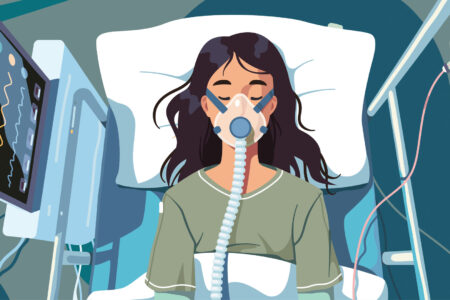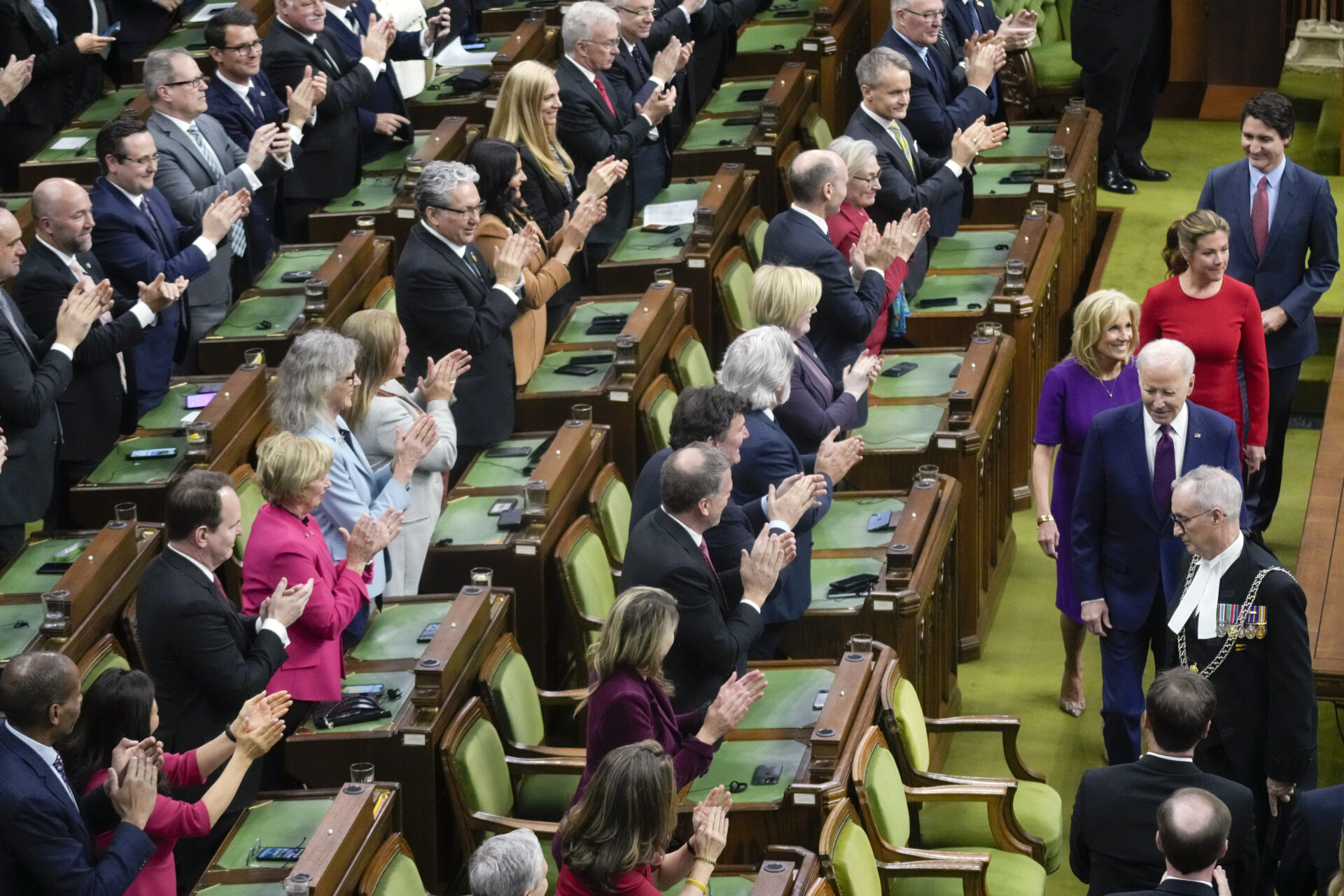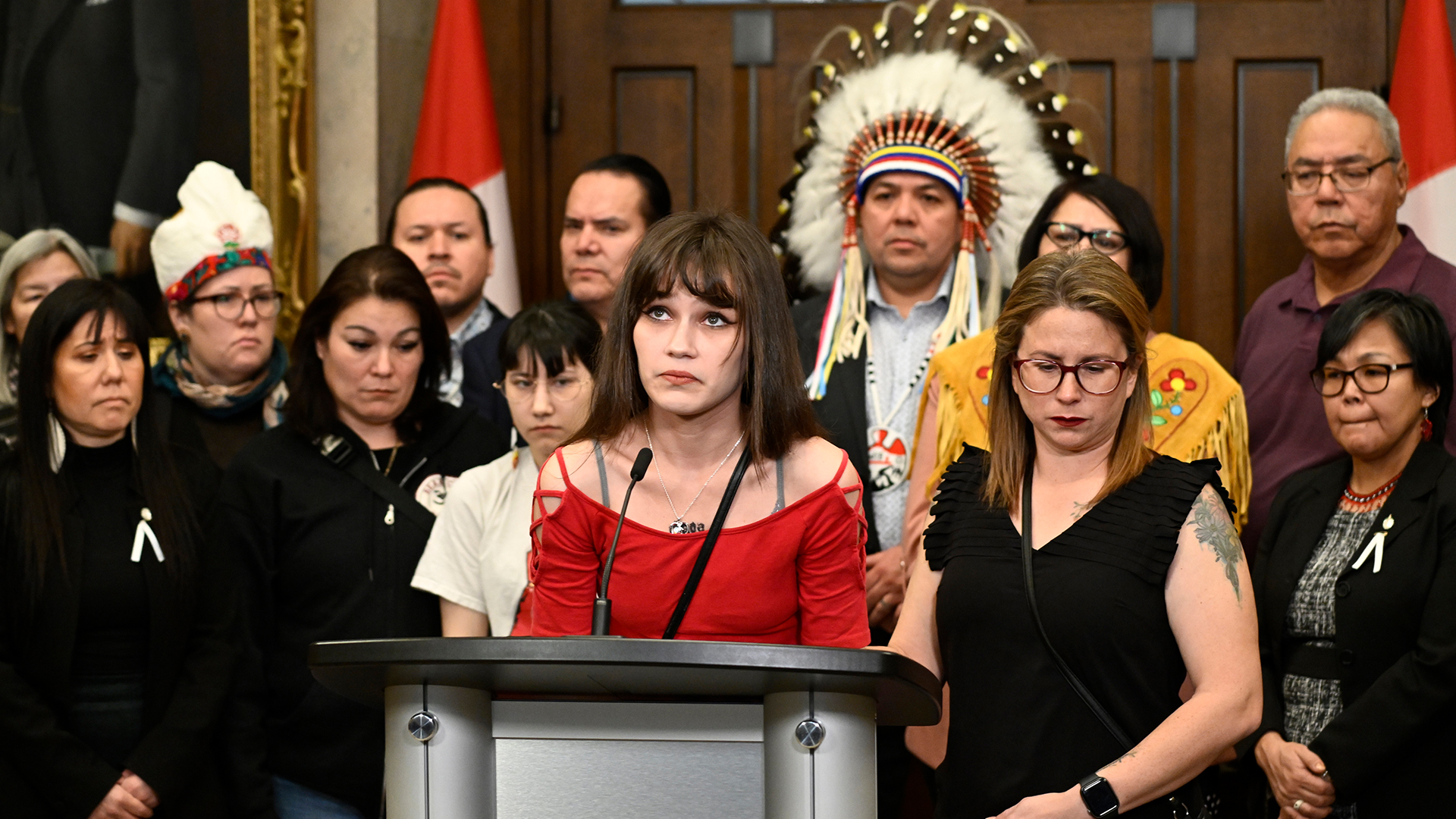
Self-congratulations were on display in our House of Commons last week as U.S. President Joe Biden praised himself and Prime Minister Justin Trudeau for the fact that the U.S. and Canada have gender-equal cabinets.
The U.S. president then proceeded to call out some members of Parliament for not standing to applaud this fact. Regardless of one’s political affiliation – which likely did determine whether they stood and applauded – it is not clear what these so-called gender-equal cabinets have actually done for women and girls living in a disaster patriarchy, a term for the impacts on women and girls of actions by male-dominated institutions and decision-makers in times of crisis. More specifically, in light of COVID-19, what have they done for women and girls experiencing male violence, increasing online and offline hate especially directed at public figures (i.e., female journalists and politicians), as well as the disproportionate impacts of economic setbacks and increased burdens of care?
This week, the Canadian Femicide Observatory for Justice and Accountability (CFOJA) reported that, compared with pre-COVID 2019, there has been a 27-per-cent increase in the number of women and girls killed involving male accused in 2022. The CFOJA underscores that this is a minimum estimate.
For many women and girls, no accused has yet to be identified and, for some, never will be. Other deaths – although likely homicides – will never be officially designated as such, including those of women and girls who have disappeared. These victims cannot and may never be counted. Their killers walk free among us.
So, what exactly should we be applauding?
Naomi Klein coined the term “disaster capitalism” in 2005 to describe how capitalists (i.e., governments and corporations) exploit disaster-shocked people and countries. Simply put, in Canada and the U.S., it is the process by which rich, powerful men, most of them white, carve out even more of the pie for themselves in ways that might never work during non-disaster periods.
Throughout disaster periods, disaster patriarchy becomes a similar and complementary force as men reassert control and dominance, erasing advances of women’s rights made over decades.
Disaster patriarchy has been on full display in the pandemic’s disproportionate impacts on women and girls, who already face entrenched debilitating inequalities. Women and girls have shouldered an increased burden of care for children, the elderly, and the sick – the latter now in unprecedented numbers. Women who left the workforce, not always by choice, to manage this heavier burden, experienced occupational and economic losses. Other women saw their jobs eliminated or were sent home for a time while their male counterparts remained employed. Men were also impacted, but the consequences of COVID-19 for women have been, and continue to be, more pronounced for women.
When will Canada say enough is enough when it comes to femicide?
The pandemic is “undoing” women’s physical and financial security
The ongoing pandemic and its fallout have deepened poverty for women and those they care for, making them even more reliant on men and the patriarchal institutions that created and sustain the historical and contemporary inequitable conditions in which women and girls lived pre-COVID-19.
The exacerbation of these and other worsening societal conditions have contributed separately and in combination to rising levels of male violence experienced by women and girls.
But these experiences are not felt similarly by all women and girls, outcomes that arise from what Rachel E. Luft refers to as racialized disaster patriarchy – the “political, institutional, organizational, and cultural practices that converge before, during, and after disaster to produce intersectional gender injustice.”
It should not be surprising, then, when focusing on victims for whom race/ethnicity was known, 36 per cent of femicide victims were Indigenous, according to the CFOJA report. So, a group that represents only five per cent of the population in Canada comprises over one-third of its femicide victims. Given this is an historical and contemporary trend, racialized disaster patriarchy works alongside colonialism, racism, and discrimination experienced by all Indigenous Peoples, but Indigenous women and girls specifically.
We know other groups of racialized women and girls are at increased risk, but the CFOJA data is limited. Official statistics may not be much better.
Statistics Canada has collected homicide data related to Indigenous populations for decades, but data collection for other racialized groups began only in 2019. Using this data, 2021 figures showed that one-third (32 per cent) of female and male homicide victims were identified as a “racialized group,” a rate of 2.51 per 100,000. This is 38 per cent higher than the rate for the rest of the population. About one-half of this group were identified as Black and almost one in five South Asian. Disaggregating by sex, the homicide rate for racialized women increased from 2020 (0.39) to 2021 (0.92) but reportedly remained lower than the rate for non-racialized women (1.03 per 100,000).
These numbers must be treated with caution, however, given low data quality and the high likelihood of missing information. Statistics Canada acknowledges these limitations and is working to improve this data. We know there has been a 27-per-cent increase in women and girls killed by men, but it is not clear how this has differentially impacted specific groups of women and girls.
We cannot blame COVID-19 entirely for this situation. Male violence against women and girls was a bleak problem before the pandemic. The lockdowns and restrictions that came with COVID-19 only laid bare for many the scope of the violence, and served to exacerbate it. The lack of progress on male violence against women is a problem recognized by the United Nations Secretary-General, António Guterres.

Canada was once a global leader in its response to violence against women, but it has yet to sign the 1994 Inter-American Convention on the Prevention, Punishment, and Eradication of Violence Against Women (the Belém do Pará Convention). Along with the U.S., Canada is one of only three countries of 35 that has yet to do so despite its 2018 commitment to correct the situation.
In 2019, the United Nations Special Rapporteur on Violence Against Women described Canada’s response to violence against women as “mainly project oriented, focusing on specific areas and lacking a human rights-based holistic legal framework and comparable data collection.” It was further noted that “there is a need for a more comprehensive and holistic national action plan on violence against women.”
This was something women’s organizations had been demanding for years, but when the National Action Plan for Gender-Based Violence was unveiled at the end of 2022, it disappointed many of these groups, which felt it fell short, providing only a list of suggestions and options and with little focus on monitoring and accountability. It is not clear that the situation is any better south of the border.
So, yes, President Biden and Prime Minister Trudeau, we do have gender-equal cabinets, but can you please be more specific about what this means for the everyday lives of women and girls?
What has it done for the reproductive rights of women in the U.S.? What has it done for women and girls who are living with male violence in both countries? Gender equality – or gender-equal cabinets – is not just about adding women. It’s about actually listening to their concerns and acting on them.
So, give us a reason to stand up and applaud and we will.










